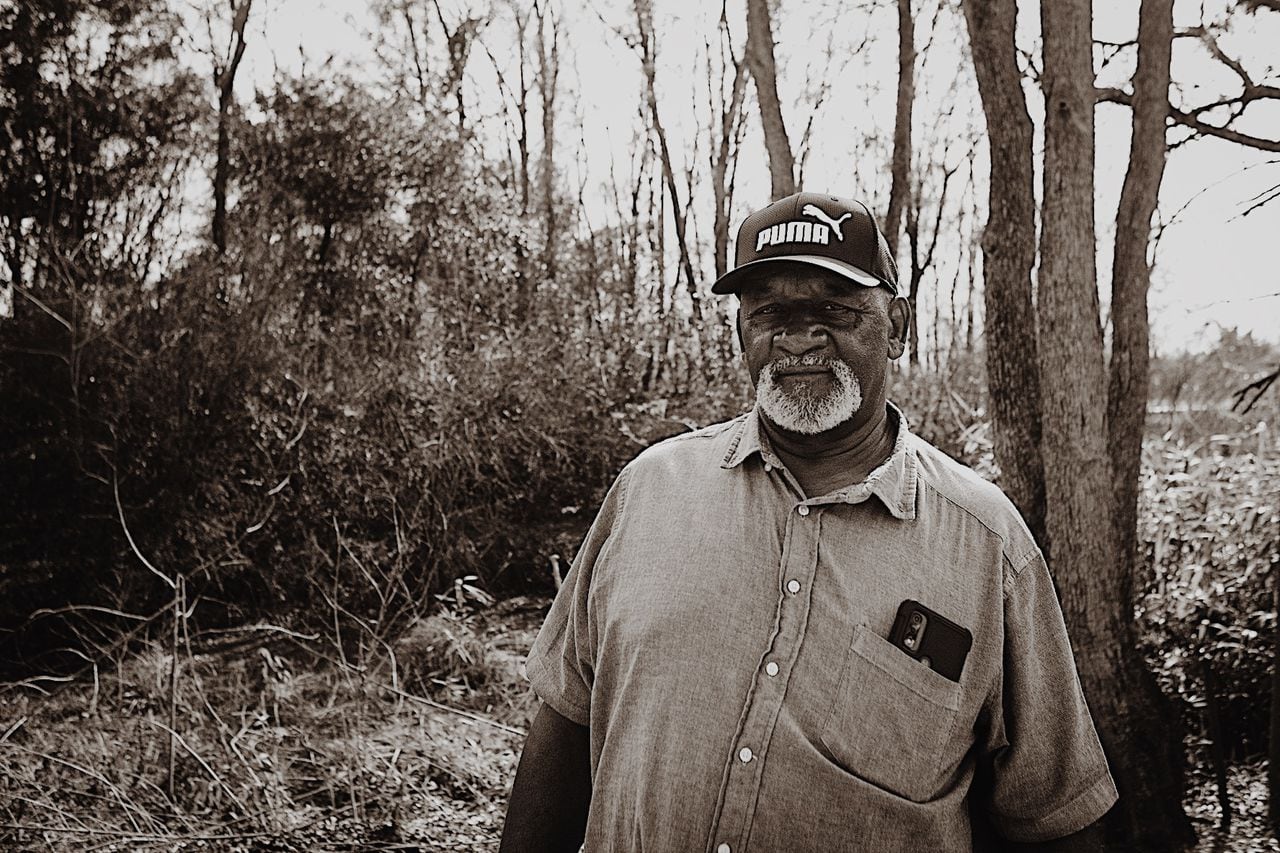Africatown, founded by formerly enslaved people in Alabama, faces new threats from industrial pollution
This story is the first in a series by Reckon and Next City examining how Black communities across the U.S. are working to hold corporations accountable for environmental injustices.
When Walter Moorer looks down Chin Street in Africatown, he remembers the names, homes, businesses, moments and lives that have long since moved on from this historic community founded by formerly enslaved Africans in Alabama’s port city, Mobile.
As a young boy living through the end of the Jim Crow era, Moorer collected old red bricks from a nearby landfill, selling each for a penny. He and his friends traded their earnings for cookies and candy at the old Chin Street convenience store. Those bricks helped build one of the nicer houses on his block, which today is pockmarked with vacant lots, dilapidated homes and the environmental scars inflicted by relentless industrial activities.
“This was a beautiful place to live until the world came for us again,” Moorer, now 66, recalls. As he speaks, a train laden with highly toxic chemicals and coal trundles through the historic neighborhood on its way to the nearby port. It’s a reminder that Africatown remains a battleground where the legacy of slavery meets the reality of environmental racism and industrial expansion.
“They came for us after slavery was outlawed,” he says. “Then we had Jim Crow, and now we got all kinds of pollution. We been fighting for a long time and I’m still in chains.”
The house built by Moorer’s grandparents in 1941 is now surrounded by multiple rail lines that service the port, a shipbuilding site and an asphalt mixing plant, with diesel trucks kicking up dust, making it even harder for him to breathe. Another company, Vulcan Materials, also uses the space behind Chin Street to store large quantities of gravel, crushed stone and sand. Dust from the giant mounds of raw materials can be seen on trees, homes, cars and almost every road.
Residents call it the “quarry.”
Moorer says he and his neighbors wore face masks to protect themselves even before the pandemic struck. He believes the breast cancer that killed his sister was caused by the pollution that pervades Africatown.
Already facing industrial pollution plus a dwindling population, many residents believe plans to develop nearly two additional miles of rail line through Africatown won’t help reduce their suffering, as leaders of the second fastest-growing port in the country claim, according to state planning documents viewed by Reckon.
Instead, residents contend that the 1.9-mile Chickasaw Railroad Lead Line, which planners call a “side-track,” is a sign of what many have been fighting against for decades: more industrial expansion, pollution, and threats to their well-being.
“The port and these other companies would love for Africatown to disappear,” Moorer says. “Maybe it will.”
In Africatown, as in so many other Black and brown neighborhoods near ports and industrial areas, solutions to environmental injustices are elusive. Enforcement is even rarer. But Moorer’s neighbors and fellow activists continue searching for ways to shake off yet another industrial project.
Moorer has lived on Chin Street in Africatown his whole life. He believes the pollution contributed to the death of his sister from cancer and has caused him serious breathing problems.Victoriano Schofield
Founded by hope, torn apart by industry
From its founding at the end of the Civil War by the very last people to have been illegally trafficked into the United States aboard the Clotilda, the last known slave ship to arrive in the U.S., Africatown’s name has been etched into history for all the worst and best reasons. Born from the ashes of oppression, a few dozen formerly enslaved West Africans created a thriving community that, against all odds, has survived for over 150 years.
Today, it’s surrounded by a modern world that some residents fear is intent on turning Africatown into an industrial wasteland.
Africatown is bordered by a port and four rail lines that ferry dangerous chemicals, coal, natural gas and other goods. The first line was installed through the area as early as 1852, and today, it services major freight haulers like CSX, Norfolk Southern, and CN rail lines. The port operates about 75 miles of track and moves over 100,000 rail cars of cargo annually, or 274 a day.
In the 1980s, a major highway was built through Africatown’s business district, the heart of the neighborhood, splitting the community in two. The Alabama Department of Transport removed rows of rental houses and businesses using eminent domain. There used to be a grocery store, bars, restaurants, diners, beauty salons, barbershops and a pool hall. Even the post office is gone.
The air here tells its own story. The community is situated in an area known as the “chemical corridor,” a 60-mile stretch of land that is home to over 300 factories and other sources of pollution that casts a literal shadow across the region, with Africatown suffering the brunt of it. The Mobile Area Chamber of Commerce and Alabama Power are partners in promoting the growth of Alabama’s thriving chemical industry. It’s the state’s second-leading export industry.
The neighborhood has the worst air quality in the state, according to a 2022 Alabama Department of Environmental Management (ADEM) report, while exposure to toxic airborne respiratory hazards is between the 95th and 100th percentile nationally, according to the Environmental Protection Agency’s environmental justice mapping tool.
The ground in many parts of Africatown is reportedly saturated with decades of intense industrial pollution. Some residents and environmental advocates believe parts of the community should be designated as a Superfund site. A $300,000 federal grant will be used to clean up some areas.
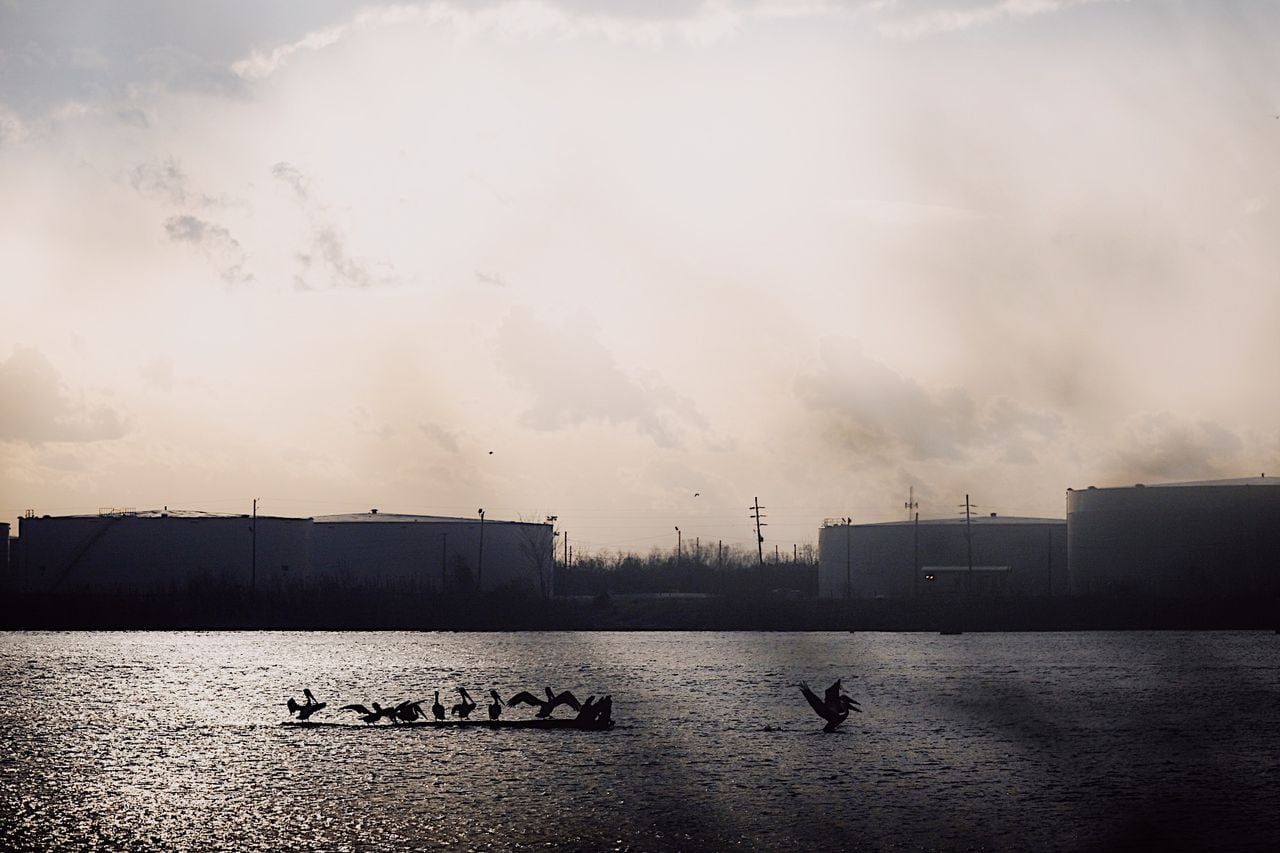
Chemical and oil storage units are a constant feature on the banks of the Mobile River.Victoriano Schofield
Almost without exception, Mobile ranks first for toxic chemical spills in the state year-on-year, with most of that occurring in the chemical corridor close to Africatown and the ecologically precious Mobile-Tensaw Delta. Even the streets are named after toxic chemicals and other things related to heavy industry, like Cynamide Way, Paper Mill Road and Berg Spiral Pipe Way, named after a company that makes large-diameter pipes for the oil and construction industries.
The presence of more than two dozen chemical storage facilities looms over the neighborhood; many residents have themselves suffered from respiratory diseases or cancer or watched family members die from either.
Come this spring, a new challenge will arise. The Chickasaw Railroad Lead Line has been framed by city and port planners as a solution to the endless idling of diesel trains in Africatown, often just a few dozen feet from homes that are visibly dusted with coal and other contaminants. The newly proposed line promises to shepherd waiting trains to the port and slash the time trains sit next to Africatown from four hours to two.
Port officials told Reckon the new rail line is an “operational improvement” akin to a passing lane and will help reduce emissions and prevent trains from blocking crossings.
“Our goal – and the goal of the businesses and railways utilizing the Port – is for trains to move safely, quickly, and efficiently,” said Maggie Oliver, vice president of communications and federal affairs at the Alabama Port Authority. “No one wants idling or stationary trains since an idling train is more likely to block a crossing and release emissions in an isolated area. The more locomotive movement is restricted, the more likely a train will idle.”
To some, another two miles of rail is just another line on a map, an opportunity to bring economic growth to Mobile. But to those who know Africatown, who feel its pulse and understand its legacy, this line is a stark symbol of industrial expansion encroaching upon a historic community’s soul.
“We need to be very skeptical of anything the promoters of this project are suggesting,” says Ramsey Sprague, president of the Mobile Environmental Justice Action Coalition, a group founded by Africatown residents in 2013. “There’s a real challenge with the cavalier way industry behaves around here. The expansion of the rail line flies in the face of what the community has been saying for a very long time. Residents don’t want any further industrial expansion in the Africatown planning area.”
Despite the planners’ optimism and insistence that the new rail line will help, a sense of foreboding remains for residents. Local environmental advocates argue that the expansion is but a prelude to increased traffic and pollution.
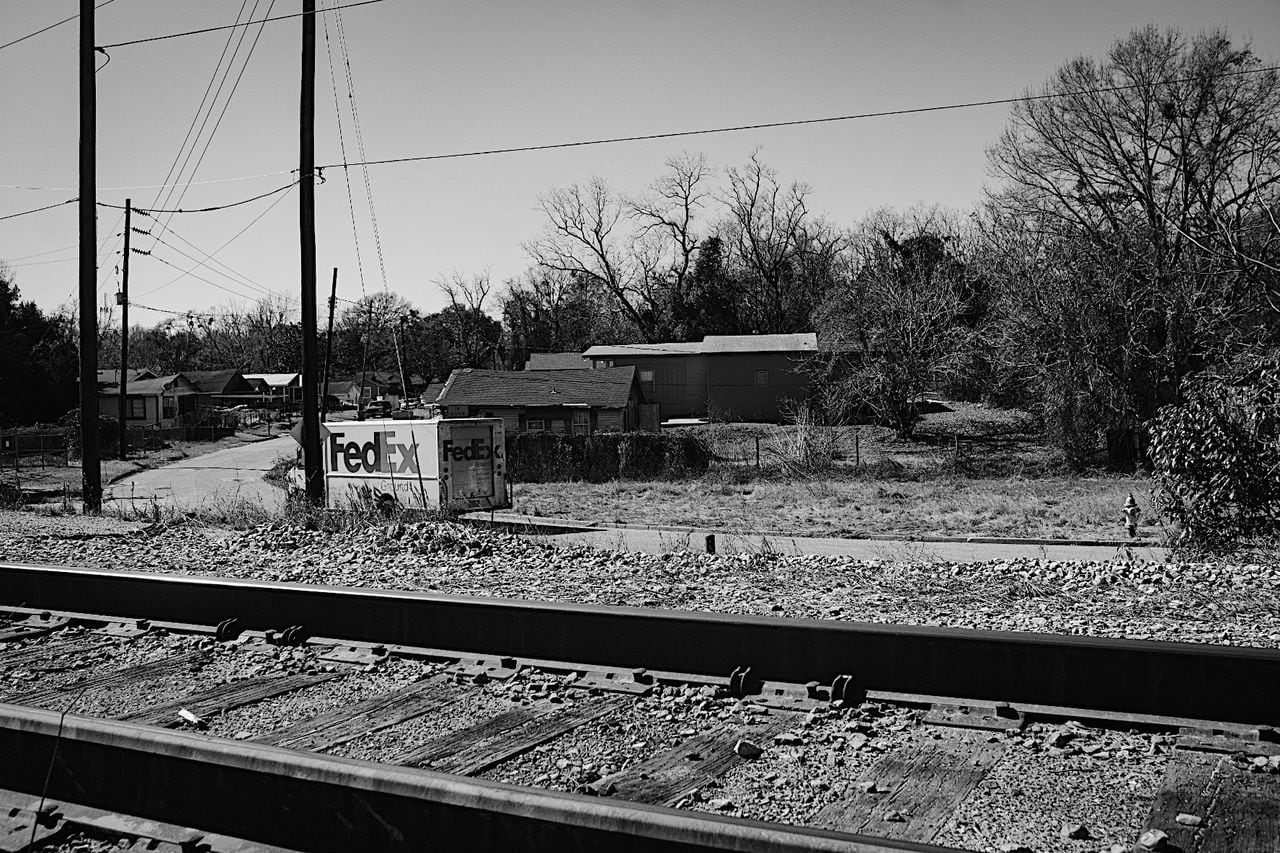
Chin Street’s proximity to one of the port-owned rail lines has frustrated residents for decades, with some complaining about lack of sleep and the diesel pollution that spews from trains that often idle in Africatown for hours.Victoriano Schofield
But expansion is hard to stop around these parts. In January, state and national legislators from Alabama met to discuss the growing need for additional warehousing and distribution space to support the port, while Gov. Kay Ivey recently noted that the port’s economic impact across the state had hit $98 billion in 2022, up $13 billion since the previous year, according to the latest figures.
“The future is bright for our port, and I look forward to seeing its growth continue to contribute and impact all of Alabama,” she said on the steps of the state capitol.
While most of the port’s physical expansion is happening to the South of Mobile, the trains and a vast majority of the industrial businesses that use the port are expanding in the chemical corridor and areas around Africatown.
It’s not hard to understand why some residents are certain that the port’s economic growth will come at their own expense.
In 2021, the Finnish chemical giant Kemira (now Sterling Specialty Chemicals) completed its latest major expansion, situating its operations just 1,500 feet from homes in Africatown. Three years prior, in 2018, a dangerously overheated shipment of the toxic organic compound bio-acrylamide arrived at the company’s facility – forcing the evacuation of residents in Chickasaw, just north of Africatown.
Africatown was even closer to the hazard. But EPA legal documents reveal that the community received no warning, leaving its residents exposed and unaware.

This is an aerial view of one side of Africatown, with a clear view of the Cochrane-Africatown USA Bridge, which connects Mobile and Baldwin Counties. Heavy industry operates beneath the bridge and surrounding areas.Joshua Hopper
Confronting industry giants
The closure of an International Paper plant in 2000 after 60 years in business was bittersweet for Africatown residents. It erased thousands of jobs and led to a significant population drop. It also stopped the toxic ash blanketing the community, corroding cars and buildings, and devastating local vegetation.
Long after the world’s largest pulp and paper manufacturer left the community, around 1,200 residents launched individual lawsuits against the company. The suit claimed that the plant had released illegal levels of toxic dioxins and furans into the air, ground and water, and the company had flouted federal regulations by not cleaning up its mess before leaving. Many residents alleged that the chemicals left behind caused cancer in residents. (There is no localized cancer data for Africatown.) The legal battle resulted in a settlement in 2020.
Local environmental stewards have taken on major polluters over the years, even eking out wins in David-versus-Goliath battles.
In 2021, they forced the formidable Alabama Power to abide by federal laws after the ADEM allowed the utility company to release illegally high levels of sulfur dioxide.
Earlier this month, community activists proved that an asphalt plant just yards from community members’ homes had been using the wrong air permit for the last 25 years, allowing it to spew high levels of toxic fumes throughout the neighborhood.
“Through all Africatown’s entire history, residents have tried to stop pollution,” says Africatown native Joe Womack, the president and CEO of the local environmental group C.H.E.S.S. (Clean, Healthy, Educated, Safe & Sustainable).
“All the way back, maybe it was a quiet word or a letter that didn’t make much difference,” he says with all the sharpness you’d expect from a 73-year-old retired U.S. Marine Corps major. “Now we have a united voice. We have protested. We have used the courts. We have held public meetings where we hold these people and companies accountable.”
He adds: “It hasn’t always worked, but we’re still here, ain’t we?”
Womack was born in Africatown but currently lives elsewhere in Mobile. His mother still lives there and he visits her weekly.
In the summer of 2022, residents celebrated after convincing Mobile’s mayor and the city council to include an industrial safe zone around Africatown, meaning gas and oil storage are no longer allowed near most residential areas. If an existing industrial use is abandoned or discontinued, a similar use won’t be allowed within the boundaries. The originally proposed safe zone size was far bigger, meaning any new expansions or changes at industrial facilities would have required city council approval. The size of the safe zone was reduced during negotiations, according to Sprague.
The other snag? These rules do not apply to the Port of Alabama because state agencies are exempt from municipal zoning laws. The zone does affect a small number of companies that operate in the zone, aside from warehouses. The construction of the new rail line will proceed.
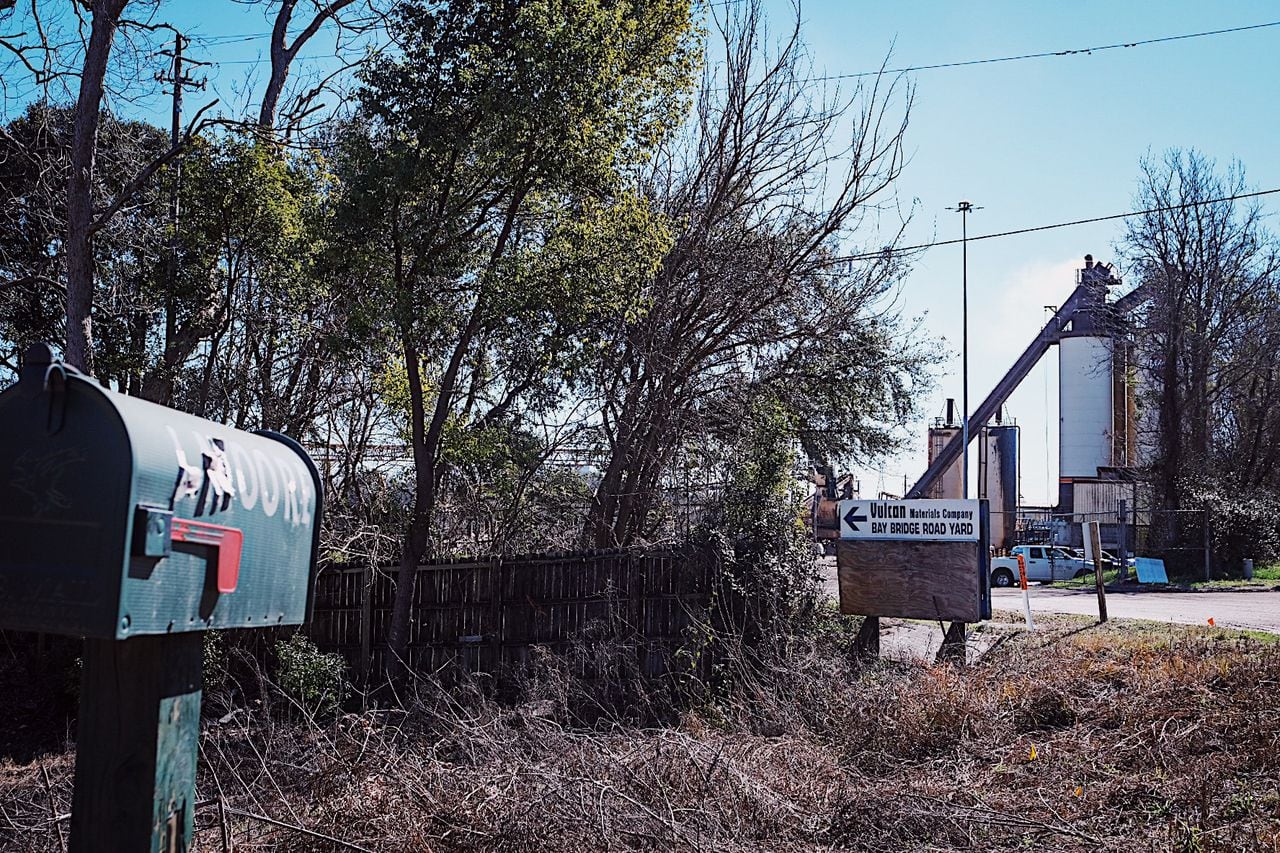
A mailbox with no home close to Hosea Weaver’s asphalt plant entrance. The plant is accused of polluting nearby residents and has been issued air violation notices by the Alabama Department of Environmental Management. The company was fined $24,000.Victoriano Schofield
Once home to 12,000 residents in the 1960s, the community has recently shimmered under an international spotlight. The rediscovery of the slave ship Clotilda, the inauguration of a new museum, the release of an award-winning documentary, and the world’s gaze through the lens of “60 Minutes” and Anderson Cooper – have brought a renewed sense of recognition and pride.
“I’m glad you’re here, I’m glad I’m here, and most importantly, I’m glad our ancestors were here,” said Vernetta Henson, a descendant of a Clotilda survivor at the Africatown Heritage House opening in July. “In keeping with their legacy that they left with us, all the things they taught us to do, let’s not let them die away.”
Around 100 descendants still live in Africatown today, with a total population of about 1,800.
But after 150 years of survival and fighting, residents know how things go in Africatown when dealing with the city, the port, or local industry.
“We appreciate positivity around Africatown, but you got to understand that even a dog brings you a bone from time to time,” says Womack.
“This is how it works,” he explains. “First, they ask for your arm, so you give them a thumb. That’s a good compromise. Then years go by, and they ask again, so you give them your hand. And maybe they’ll help build a few things like a museum or a welcome center. But let me tell you this: They are still looking at your arm.”
A national crisis in port cities
The environmental racism Africatown’s residents face is not unique. Approximately 39 million Americans live in close proximity to ports, most of whom are people of color. Similar stories are playing out in the ports of Houston, New Orleans, Louisiana, Maryland, Oakland and beyond.
Over 2,000 miles away from Africatown, around the colossal San Pedro Bay Port complex – home to the neighboring Los Angeles and Long Beach ports – communities have been fighting for over two decades to fix the pollution issues that they claim have brought misery, illness and death.
Some residents have called the areas around the two ports “Diesel Death Zones” because of the pollution created by trucks, trains and ships daily. The heavy pollution causes approximately 1,300 premature deaths a year in the neighborhoods around both ports, as Los Angeles councilmember Nithya Raman noted when the city voted to adopt a non-legally binding resolution calling on ships at the city’s ports to be zero-carbon by 2030. The goal, industry experts say, is highly unachievable.
Why is pollution from ports any worse than, say, the pollution close to busy roads? Container ships use a fuel source known as bunker fuel or heavy fuel oil, the thick residue left behind in oil refineries after the lighter liquid has been taken. It’s widely considered to be the dirtiest of all fuels.
Until new international rules were passed in 2020, a single container ship’s fuel load pumped the same amount of sulfur oxide pollution into the air as 50 million cars, according to a 2018 study by an independent environmental research group in the Netherlands.
The rules did reduce the amount of sulfur oxide in the air — but they created an entirely new problem. While some ships began using pricier low-sulfur fuel, others opted to trap the sulfur emissions using a special process. Unfortunately, the process involves dumping the collected pollution into the sea, which reacts with saltwater and is immediately turned into sulfuric acid. About 80% of the discarded pollution ends up on shores.
These Los Angeles ports are more than just adjacent maritime behemoths: They are the economic heartbeat of a region. The business interests that keep the goods and money flowing lie with some of the world’s most powerful corporations and people. Today, the ports generate an annual economic value in the hundreds of billions and employment for 3 million Americans, according to Port of Los Angeles figures.
While the ports have long been a celebrated economic driver in California, their pollution issues weren’t always apparent.
As the 1990s dawned, residents living close to the ports witnessed a rapid transformation. Hungry for expansion, the ports stretched their arms wider, sending trucks rumbling through residential areas.
“They saw the visual landscape of their neighborhood changing,” says Melissa Lin Perella, the National Resources Defense Council’s chief equity and justice officer, who has worked on the issues related to the ports for the majority of her 20 years at the organization.
“It was around this time that scientists were also starting to come out with more and more research and evidence linking the health harms from diesel pollution from ships, trucks, and trading equipment and linking it to asthma, cancer risks, premature deaths, heart attacks.”
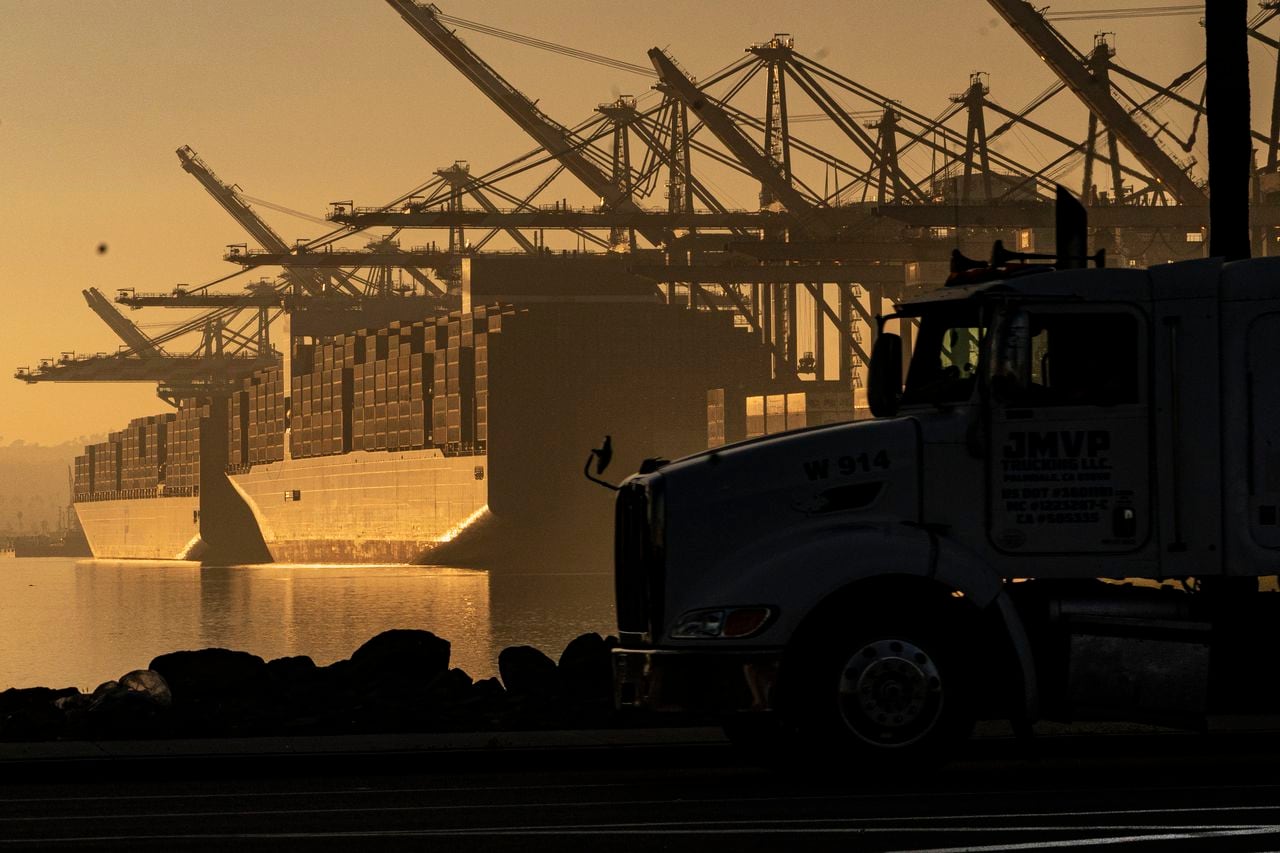
A truck arrives to pick up a shipping container near vessels at the Port of Los Angeles, on Nov. 30, 2021. An influential government advisory panel comprised of major U.S. businesses is proposing new rules that would roll back already limited public access to import data, a move that trade experts say would make it harder to trace labor abuse by foreign suppliers. The proposal, if adopted, would shroud in secrecy customs data on ocean-going freight responsible for about half of the $2.7 trillion worth of goods entering the U.S. every year in the same way it already is for rail, truck and air cargo.AP Photo/Damian Dovarganes, File
In the middle of this environmental upheaval, the Port of Los Angeles unveiled a new ambition: the China Shipping terminal. Named after the company set to operate it, the project sprawled across the equivalent of five football fields. It promised economic prosperity but at a staggering cost: 250 ship calls a year, adding a million additional diesel truck trips and a relentless invasion into local residents’ daily lives.
After private law firms rejected pleas from the affected communities, locals contacted the NRDC. It sued the City of Los Angeles under the California Environmental Quality Act, which mandates that government agencies disclose and seek to mitigate projects’ environmental and public health impacts.
Despite losing at the trial court, the NRDC and its allies won at the Court of Appeal in 2002, halting the project. This victory was significant monetarily and symbolically, forcing the port to negotiate a settlement. The unprecedented settlement allowed the port to continue the project with improved conditions, including $50 million in air quality and aesthetic mitigation funds and adopting cleaner technologies at the terminal.
At the time, it was a case that showed communities of color that there was hope. Residents celebrated their unlikely win as the terminal’s construction continued and the port moved on to new projects.
Then it all fell apart.
“It came to light that the port actually had not followed through on a lot of the cleanup commitments for that terminal,” says Lin Perrella, who said that she is in no way dismissing the progress that was made. “They kind of hid it behind closed doors and gave secret waivers to various groups, so we are far from declaring victory even after 20 years.”
While the NRDC managed to enforce laws, win concessions from the port and strengthen environmental precedents in the court system, that was only half the fight. The two ports reduced emissions drastically until 2005 but have done little since, Lin Perrella says.
In 2020, the NRDC took the city back to court to force it to comply. An appellate court decision in January ordered the Port of Los Angeles to implement more pollution mitigation measures, sending the case back to a lower court for action, according to local media.
There has been some incremental progress in addressing the 10,000 heavy-duty trucks that pass through the neighborhoods around the port complex every day. Since early 2023, those trucks have been required to undergo the same emissions and maintenance inspections that California’s commuter vehicles have received since 1984 under the Smog Check program.
Trucks account for 82% of California’s diesel particulate matter (PM 2.5), a carcinogenic and toxic air contaminant, as well as 58% of the harmful oxides of nitrogen (NOx) emissions that came from vehicles and vessels, according to the Coalition for Clean Air, a Los Angeles-based air quality organization that helped spearhead the new checks for heavy trucks and came up with the state’s Smog Check program in the early 80s.
Research has shown poor health outcomes among adults and children living close to ports in Los Angeles and beyond.
Despite minor improvements in the levels of pollution coming from Los Angeles’ two giant ports, residents still experience particularly high rates of cancer, cardiovascular issues and respiratory illnesses, including childhood asthma, according to an EPA March 2021 clean air case study on the ports.
While it can take decades for some diseases and cancers to be detected after exposure, making it far more challenging to seek recourse, asthma among children can be detected far more quickly.
“In the communities we serve, asthma can affect every part of a family’s life and be detrimental in so many ways for the child suffering,” says Sylvia Betancourt, project manager for the Long Beach Alliance for Children with Asthma, a community coalition dedicated to improving the lives of children with asthma in the region.
“Parents or caregivers miss work, placing additional financial strain on families that may already be struggling to meet their obligations,” she explains. “The child is often forced to stay indoors at school and home, meaning they miss out on social development. They might fall behind at school because they are in hospital. The consequences of asthma can have detrimental and lifelong consequences, including continued poor physical and mental health.”
Neighborhoods around the ports are some of the country’s most polluted and are considered among the highest danger zones for asthma nationwide. Residents experience 37% more visits to the emergency room than those living in other parts of Los Angeles.
“When a child leaves the ER after an attack, they go right back to neighborhoods saturated in diesel pollution from the trucks and trains that pass through,” Betancourt says. “It’s constant exposure, and it’s hard to escape from.”
But proving who or what has caused illness and health conditions in a legal setting has been an ongoing challenge for environmental advocates, scientists and attorneys.
Doing so requires establishing a clear causal link, not just showing a correlation between the polluter and the health condition. The high evidentiary standards pose a significant hurdle for the environmental justice movement.

Africatown’s cemetery, also known as Plateau Cemetery, is the final resting place of Cudjoe Lewis and 109 other survivors of the slave ship Clotilda. Lewis, who is also known as Kazoola, was born in modern-day Benin in 1841 and was thought to be the last surviving person who lived in slavery when he died in July 1935. However, in recent years, evidence has emerged that two other survivors of the Clotilda outlived him.Victoriano Schofield
‘All I smell is money’
Back in Africatown, a widening and deepening project is expected to double the port’s capacity by 2025. While a boon for commerce, this expansion signals an inevitable surge of rail and road traffic — and more pollution.
Activists are also concerned about plans to build a new 7.4-mile toll bridge across Mobile Bay, the most likely route for drivers frustrated with years of construction holding up traffic close to the current routes across the bay. Once built, the Africatown Bridge will also likely face increased traffic from truck drivers avoiding the $18 toll for 18-wheelers; national research from 2011 found that most truck drivers avoid tolls whenever possible.
“All those trucks gonna make Africatown more dangerous,” says Womack. “They’ll eventually come back a few years from now and say, ‘You’ve got all this traffic coming through Africatown, we gonna have to widen [the highway].”
Many residents remain in the dark about the shifting tides around them – be it a new rail line, elusive pollution permits, or unseen biohazards. Even up until mid-January, many residents seemed to have little or no knowledge of the plans to build the new rail line. They are still working out what to make of it, what to do, who to speak to and what to ask.
This pattern of sparse information, which residents see as deliberate, has bred resentment and mistrust over decades.
About eight years ago, an effort to bridge this divide emerged. The Africatown Business and Community Panel (ABCP), a non-profit, was established to bring together community leaders, local businesses and the influential Alabama State Port Authority. The initiative promised a new chapter of dialogue and mutual understanding. The group was founded by members of another community non-profit, the Africatown Community Development Corporation, started in 2013 and led by Cleon Jones, who caught the final out to win the 1969 World Series with the New York Mets.
Both groups are presided over by many of the same Africatown residents, according to IRS and Alabama state records. Their business members consist primarily of industrial companies that surround Africatown and are, in some cases, led by wealthy and well-connected Mobile families, including a lumber company once owned and operated by the family of current Mobile Mayor Sandy Stimpson.
Each business has an economic interest in the port’s expansion and success, such as Alabama Power, The Cooper Group, Hosea Weaver, Honeywell, Sterling Specialty Chemicals, Kimberly-Clark Corporation, Vulcan Materials and others, including companies involved in trucking, oil, lumber, engineering and construction.
The ACDC received $129,000 from the City of Mobile, the Mobile County Commission, the State of Alabama, the U.S. Department of Housing and Urban Development and the Mayor of Mobile’s office, according to IRS tax records going back to 2019. The money was used to host a farmers market, create after-school classes, teach children about nutrition, create a community garden, reduce blight, and generally beautify areas around Africatown, among other contributions to the community.

The entrance to Hosea Weaver and Vulcan Materials, with Chin Street homes to the left. Residents believe dust and toxic fumes generated by the two companies are responsible for their breathing issues and other respiratory and cardiovascular problems.Victoriano Schofield
The ACDC did not respond to Reckon’s questions about its relationships with local and state government entities and its business partners.
While the ABCP board contains three Africatown residents, Sprague contends its primary aim is to smooth the industry’s path above community objections. Environmental advocates claim those residents on the panel have failed to represent the community’s will, instead acting as consultants for local businesses and satisfying the idea that the community is aware and involved in industrial developments.
“For the dozens of pollution permits that come up routinely in Africatown, we never see any community outreach done by that agency or its members beyond their insular meetings,” Sprague says.
“MEJAC and many other Africatown stakeholder groups would prefer an approach for such activities of consequence to match City of Mobile standards for ‘Neighborhood Meetings’ regarding zoning changes. This would include publicly advertised meetings held at the Hope Community Center during the evening, during the week with a clear written record of attendees and accounting of minutes.”
Sprague does not live in Africatown.
The ABCP’s quarterly newsletter, released in late February, noted that the new rail line would reduce emissions and “accommodate ongoing growth at the Port” and that the Hosea Weaver asphalt plant was proving to be a “good neighbor” to the community.
“I’m tired of those who do not live in this community claiming to speak for Africatown,” ABCP President Lister Portis told Reckon in an email. “The criticism of the ABCP is not fair and does not reflect the views of the great majority of the community members who I know. I am proud to be part of it and the accomplishments we have achieved through the community and businesses working together.”
The ABCP board also told Reckon in a statement that it believes the actions of the group are in the community’s “best interests” as opposed to “outside groups” that do not live in the Africatown and “promote their own interests and agenda over the Community’s needs.”
Half of the ABCP’s board members do not live in Africatown, and various community advocates allege that none of the group’s business member executives live in Africatown.
ABCP’s statement said that the image of Africatown being surrounded by polluting businesses and industries that do not act in Africatown’s best interests is a “severely outdated narrative.”
It also noted that the founding of the Port of Mobile, occurring in 1711, “greatly predates the story of the Clotilda.” Incidentally, the descendants of slave trader Timothy Meaher, who financed the Clotilda’s illegal journey to bring Africatown’s would-be founders to the United States as slaves, still own around 14% of the community. The Meaher family remains prominent in Mobile.
Back on Chin Street, Moorer feels the rumble of heavy-duty trucks moving through his neighborhood on a daily basis. Their loads of stone, gravel, sand and bitumen fill the air with dust, bangs and crashes.
Like the bunker fuel burned by cargo ships, bitumen is made from the remnants of refined crude oil and smells like sulfur. The fumes from asphalt manufacturing can cause a slew of health issues, including asthma, chronic bronchitis, cardiovascular illnesses, lung cancer and skin cancer, according to the International Agency for Research on Cancer.
The landfill that once provided Moorer with his first paycheck is now occupied by two companies that are a central part of the heavy industry that affects Moorer’s and his neighbor’s lives.
Hosea Weaver’s state-of-the-art asphalt plant was built two decades ago without seeking permission, Moorer recalls.
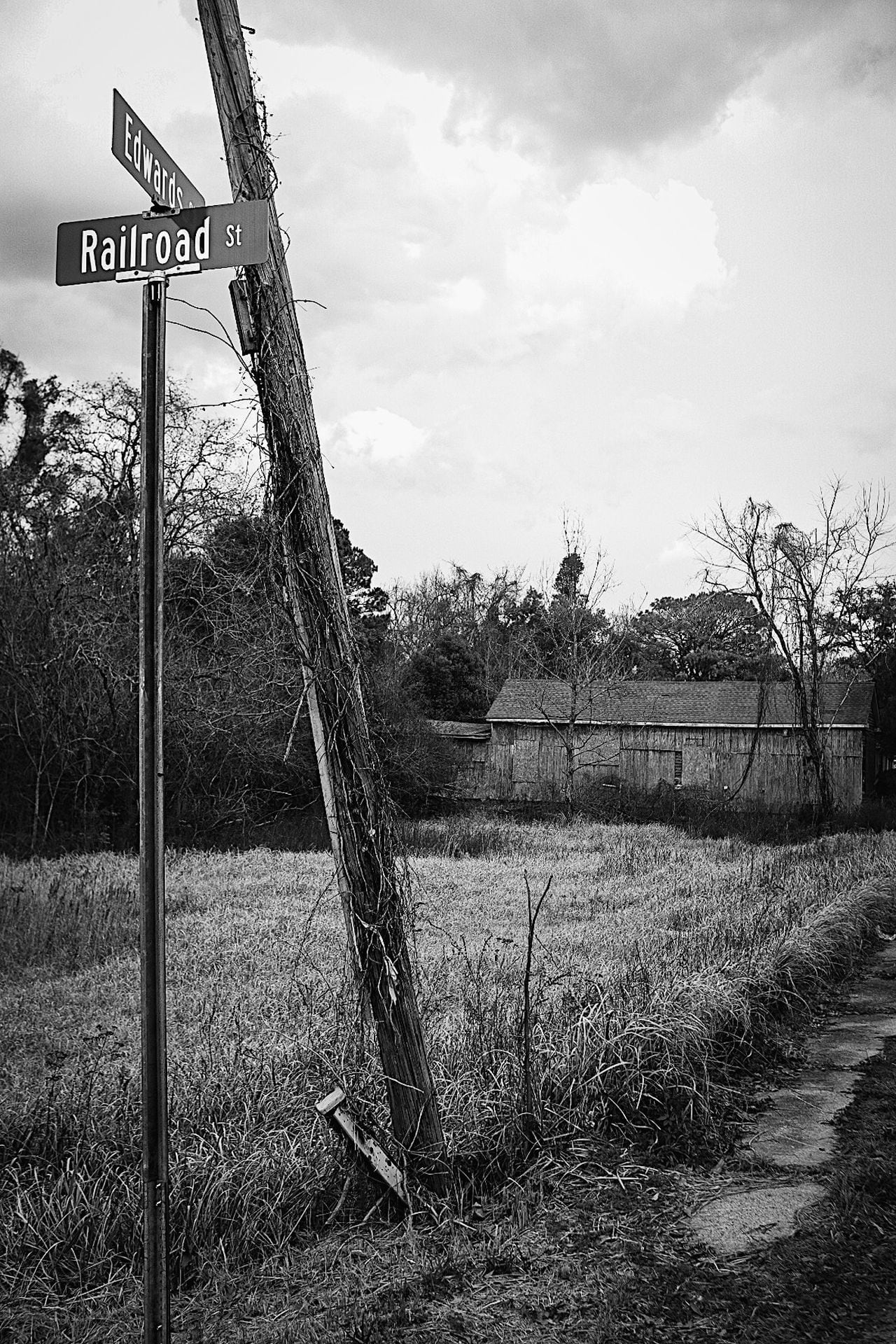
The intersection of Edwards and Railroad Street is close to an overgrown lot and barn. One of the port-owned rail lines runs adjacent to Railroad Street.Victoriano Schofield
When residents complained to the city, its planning commission granted retroactive permission and only asked that the company create a privacy fence with tree buffers to shield the neighboring homes. Two other companies have since claimed its place on the sprawling site.
Alongside the relentless air pollution coming from behind Moorer’s home on Chin Street, there is also an ever-present waft of animosity that symbolizes the long and divisive relationship between Africatown’s storied residents and some of their industrious neighbors–whose motivations are no longer concealed and often laid bare as straightforward confessions.
“I was walking by the cemetery one day, and I saw a worker for the Weaver plant walking my way,” says Moorer. “I complained to him about the noise and the terrible asphalt smell. He said, ‘All I smell is money.’”
